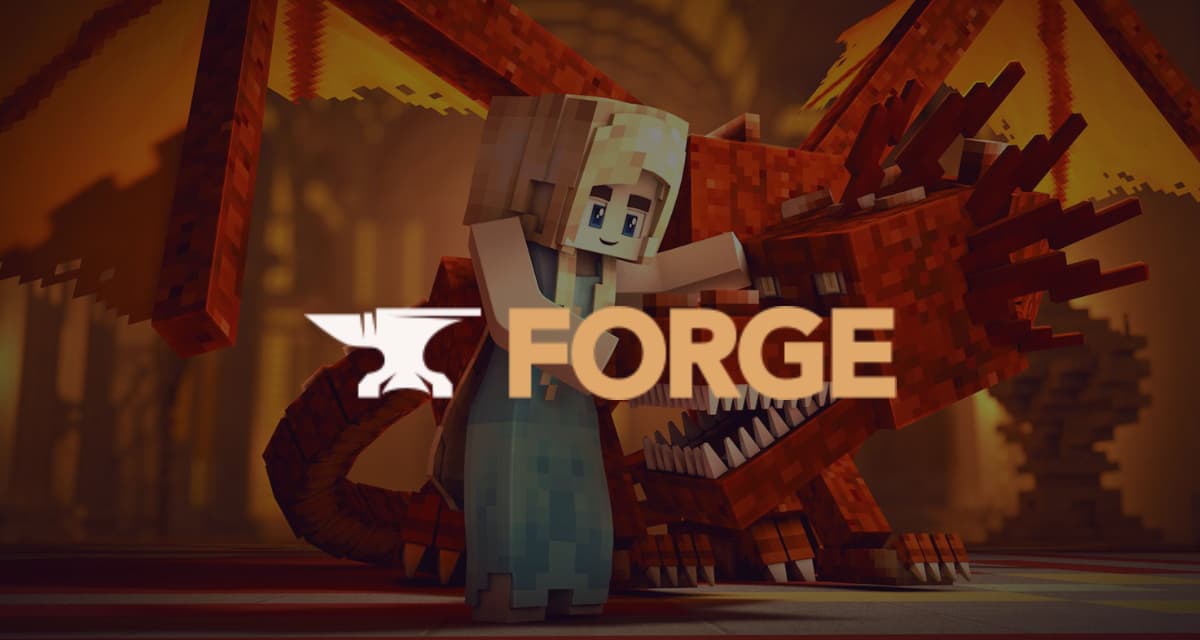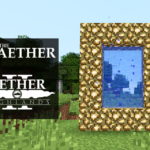You may have already wanted to install a mod on your game, in order to add new features to it, and by asking around you learned that there are 2 libraries allowing you to add mods : Forge and Fabric.
At the end of this guide, you will know the advantages and disadvantages of each of the 2 APIs, and you will know which one to use in your case.
But before you start, if you don’t know how to install a mod on Minecraft, you can follow this tutorial which will guide you step by step : how to install a mod on Minecraft.
Table of Contents
Introducing Forge
To begin with, let’s take a look at the oldest modding library in the game, Minecraft Forge. Indeed, Forge arrived almost at the beginning of Minecraft’s development, with the aim of making the use and compatibility of mods easier. Indeed, before the appearance of Forge, each mod worked separately, making the compatibility between them very complicated.
Even if it remained for a long time as the only modding library of the game, it could see a few years ago the arrival of a brand new one, Fabric. Nevertheless, Forge still has many advantages over Fabric :
- Larger mod database. As the oldest API, developers were forced to use it before Fabric was created, so it contains a larger number of mods than its competitor.
- Forge is compatible in all versions of Minecraft.
But despite these advantages, Forge also has some flaws, including :
- Slow updates. Forge takes a long time to be released in the latest version of the game, even if it has been improving for a few years.
- Average optimization. Forge is not optimized compared to the Vanilla version.
Presentation of Fabric
Arrived in 1.14, Fabric aimed to bring novelty in the world of mods on Minecraft, especially with the goal of being lighter and better optimized than Forge. The challenge is rather successful because it has managed in a few years to make a real place in the environment, although today it is still less used than Forge.
Here is a list of the main advantages of Fabric :
- The updates of the library are much faster. The library is even updated in some snapshots of the game (which is not the case with Forge), so players can enjoy mods almost directly after the release of a version. It is also designed to allow modders to update their mods more quickly.
- As said earlier, the API is also much lighter and optimized than Forge, especially for server-based play. It also contains much more advanced additional optimization mods, such as Sodium, Lithium and Phosphor.
- Mod developers have more facilities and possibilities compared to Forge.
- You can play on a Fabric server with the Vanilla version of Minecraft, and some mods don’t need to be installed on your computer when they are on a server, like the optimization mods mentioned above.
- Fabric is not only designed to use mods that modify the gameplay of the game. Indeed, you can create a server with this API that is accessible in Vanilla, if it does not contain mods that require modification on the player’s client. At first glance, this feature is not necessarily useful, but on the contrary it allows you to add useful mods easily on a Vanilla server, such as optimization mods.
Negatives of Fabric :
- Less mods than on Forge. The library being more recent, the quantity of mods present on Fabric compared to Forge is lower, even if it is getting better.
- The library is only available from version 1.14 of Minecraft.
But which API should you choose ?
To help you choose between the two, here is a list of several cases, followed by the most suitable library for each :
- If you want to create a pre-1.14 server, you will have no choice and will be forced to use forge to add mods.
- If you want to make a survival with a big modpack, Forge is also more adapted because it contains a bigger database of mods as said earlier.
- If you want to make a survival with a few mods, to make the game more complete but without altering it, Fabric is much more interesting. You will find a lot of mods with this one !
- Finally, if you want to make a Vanilla survival, Fabric will also be more adapted, because as said earlier, the API contains many mods for server optimization, which will allow you to gain in performance.
How will the environment evolve in the next few years ?
As you can see from this article, Fabric’s API is clearly better thought out in every respect, and I can only recommend it. However, Forge still has an important place in the community, because it has a much larger mod bank, and is compatible in all versions of the game, as said earlier.
However, we can see that more and more modders are switching their mods to Fabric’s library, and that the amount of mods on each of the two libraries is becoming more and more balanced. So it is likely that Fabric will take over in the next few years, even if Forge will never really disappear, unless the Fabric developers decide to update Fabric in the older versions of the game, which is unlikely.






